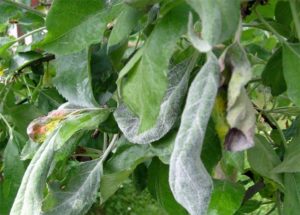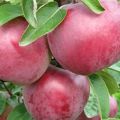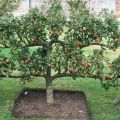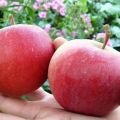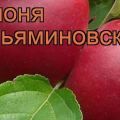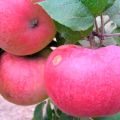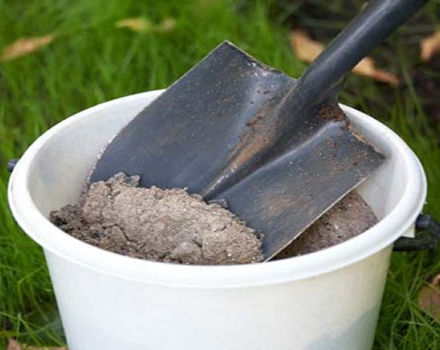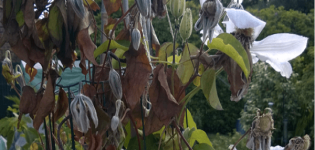Description of the Kutuzovets apple variety and the history of breeding, regions for cultivation
At the present time, more than 7,500 varieties of apple trees are known. Each gardener chooses for himself only those varieties that are suitable for the embodiment of his goals. The choice of trees is determined by climatic characteristics, taste characteristics and industrial interest. Kutuzovets is rightfully considered the best variety when using an apple tree for industrial purposes: for harvesting juices, compotes or nectars and subsequent sale.
Content
Description and varietal features
According to the detailed description, the Kutuzovets variety is classified as an autumn fruit tree, since the harvest falls in September-October.
The distinctive features are:
- The trees are medium-sized with a lush, rounded crown.
- "Matured" shoots become less heavy and spreading, so maintenance and pruning of branches does not require much effort.
- The main branches extend from the trunk at a significant angle of inclination.
- The trunk and perennial shoots are colored green with a dark shade, and the young shoots are gray-brown.
- Green, glossy leaves of the culture are oval in shape with a curled tip. In this case, the sheet plate is flat, lowered down. Because of this, it seems that the sheet is bordered along the contour.
- On mature plants, the fruits ripen on ringlets, twigs and spears. Young trees are covered with apples on the last two branches.

Apple trees of the Kutuzovets variety grow well near apple plantings.
- The tree blooms with white-pink small flowers. The flowering period is May 10-30.
- The fruits of this apple variety are large and reach 130 grams. The apples are distinguished by a rounded shape with a slightly noticeable ribbing and a pale blush. The fruit is green in color, but by the time of ripening it acquires a yellow color with barely noticeable white or gray dots. The pulp is dense, white in color and very juicy. The apple has a sweet and sour taste, with a spicy note. Ripe apples don't fall by themselves.
- Apples are stored for a long time in a dark cool place, delighting with taste until April.
Kutuzovets gained wide popularity in Europe for the possibility of an increased preservation period of the harvested fruits.
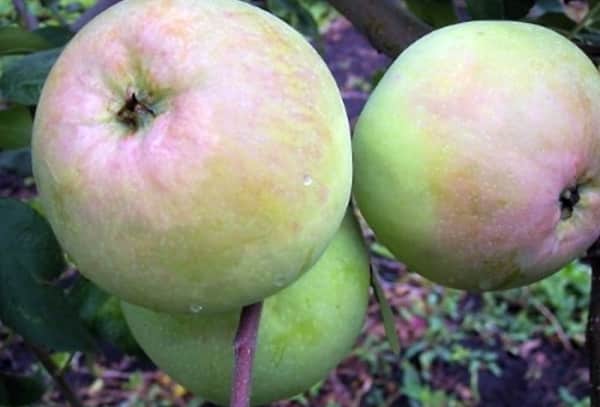
Breeding history
A variety of apples was bred in the first half of the 20th century. Research Institute of Horticulture and Medicinal Plants in Samara under the leadership of S.P. Kedrina was the first to select apples.
For breeding, the fruits of Renet Simirenko, Skrypyzhapel ordinary were used.The resulting culture was planted and bore fruit back in 1947. After 32 years, the plant was included in the State Special. registry. It was allowed to cultivate the variety in the Middle Volga region.
The varieties were crossed in two stages. First, the maternal species Simirenko was the pollinator. Then we used the parent variety Skrypyzhapel. Then the seeds were stratified for four months, and the plant was hardened.
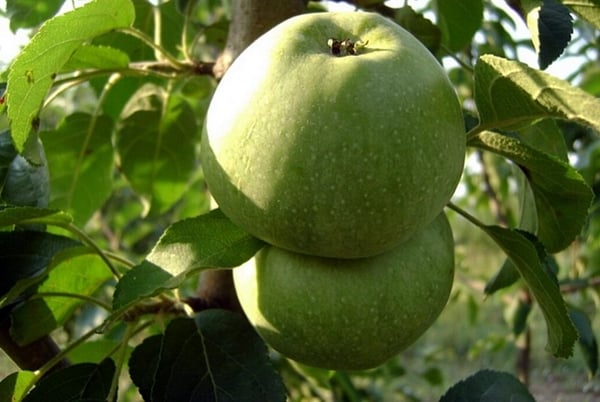
What are the varieties?
No varieties of the Kutuzovets apple tree have been bred.
What are the advantages and disadvantages?
At present, the popularity of the Kutuzovets apple culture is declining. The process is due to the fact that in order to obtain a significant harvest, several factors must be observed. These include: timely pruning of trees, favorable conditions for crop growth, moderate watering. In addition, periodic fruiting and low winter hardiness of the tree are also distinguished from the minuses.
But, despite the indicated disadvantages, the apple tree has a number of advantages over other varieties:
- High yield and, as a result, the title of one of the best varieties for industrial gardening and sales.
- Fruits are suitable for different preparations: mashed potatoes, jam, jam or juices.
- Long-term storage of apples under all conditions.
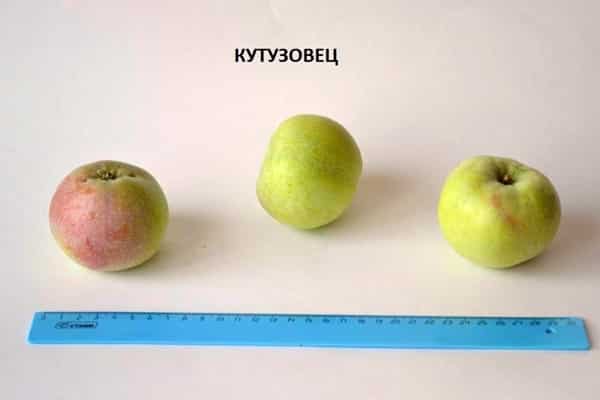
Characteristics of the Kutuzovets apple tree
The apple tree Kutuzovets is difficult to confuse with any other varieties. This is due both to the size of trees and fruits, and to the yield of the plant.
Apple trees are planted from late March to mid-April at a distance of 4-5 meters from each other. Having chosen a lighted place, you need to prepare fertilized pits up to 1 meter deep, into which the seedlings should be rooted.
Dimensions of the tree
Since the apple tree is a medium-sized crop, its height reaches a maximum of 4 meters. Most gardeners achieve a seedling height of no more than 2.5 meters, starting from the second year after planting.
Trees over 7 years old have their tops cut off. Young seedlings do not need pruning.
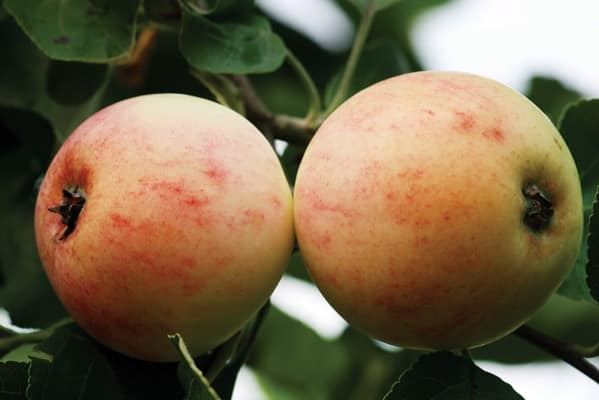
Productivity and fruit assessment
Young seedlings are not fast-growing. Therefore, the first harvests of apples can be obtained in 5-7 years from the moment the tree is planted in the soil. The fruits do not appear regularly, there is a certain periodicity. But proper care and timely pruning lead to annual crop fruiting.
The number of fruit born in 12 months from one apple tree in dachas or gardens reaches 60 kilograms. For industrial purposes, up to 150 quintals of apples are harvested from one hectare of plants.
With high-quality constant watering, the harvest will not keep you waiting. In arid regions, the plant needs sufficient watering, at least 2 times a week. Overdried soil is not rich in nutrients and will not provide the required minimum of macronutrients for the plant.
The fruits are harvested in September, when the apples have gained maximum weight and are full of nutrients.
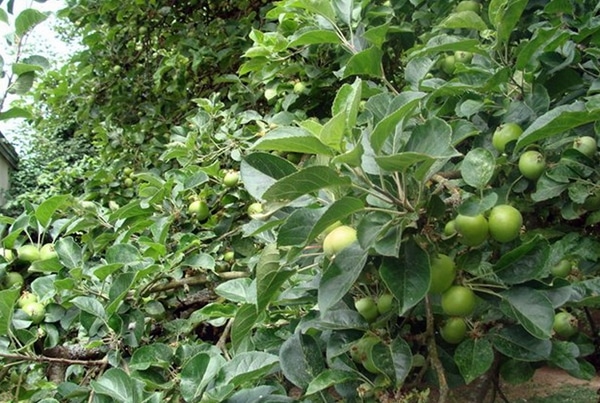
Winter hardiness
If the climate in the region where the plant is grown is moderate, then the characteristics regarding the winter hardiness of the tree are good. Severe climatic regional conditions significantly reduce the indicator. However, the apple tree has a distinctive feature - the hybrid has a high ability to recover with proper care.
The apple variety is frost-resistant, but a radical change in the weather for the culture is stress. Therefore, after winter, the plant is fed to saturate the soil and combat stress conditions.
Diseases and known pests
The apple tree is characterized by high or medium resistance to known pests and garden diseases. Diseases often occur through human fault, and proper, regular care allows you to save trees.
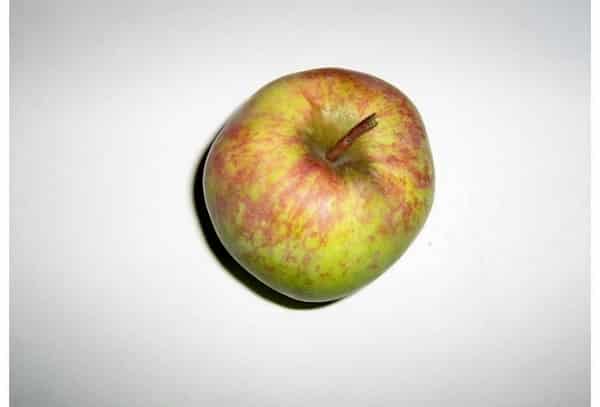
You can eliminate diseases in the following way:
- Powdery mildew - spray with colloidal sulfur solution.
- Fruit rot - remove the damage, treat the tree with Bordeaux liquid.
- Scab - urea treatment.
- Black crayfish - use nitrogen fertilizers.
- Milky sheen of the bark - cut off damaged areas, lubricate the tree with a disinfectant.
- Bacterial burn - cut off spoiled branches, heal wounds.

Among the main pests are:
- Aphid is green. The insect will destroy the infusion of dandelion, potash fertilizers.
- Apple flower beetle. You can overcome the pest only by starting a fight with it even before the buds dissolve.
- Apple moth. Chlorfors solution will help get rid of moths.
- Leaf worm - will get rid of the insect with a weak solution of nitrophene.
The apple tree has the ability to heal itself after various diseases and lesions.
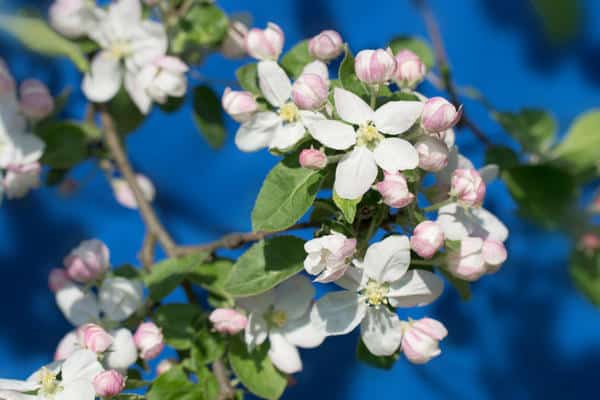
Growing regions
The variety is widespread in its historical homeland - in the Middle Volga region. A temperate climate is essential for growing crops. Therefore, the apple tree grows in Belarus, Ukraine, Bashkiria, Lipetsk, Orenburg regions of Russia.
